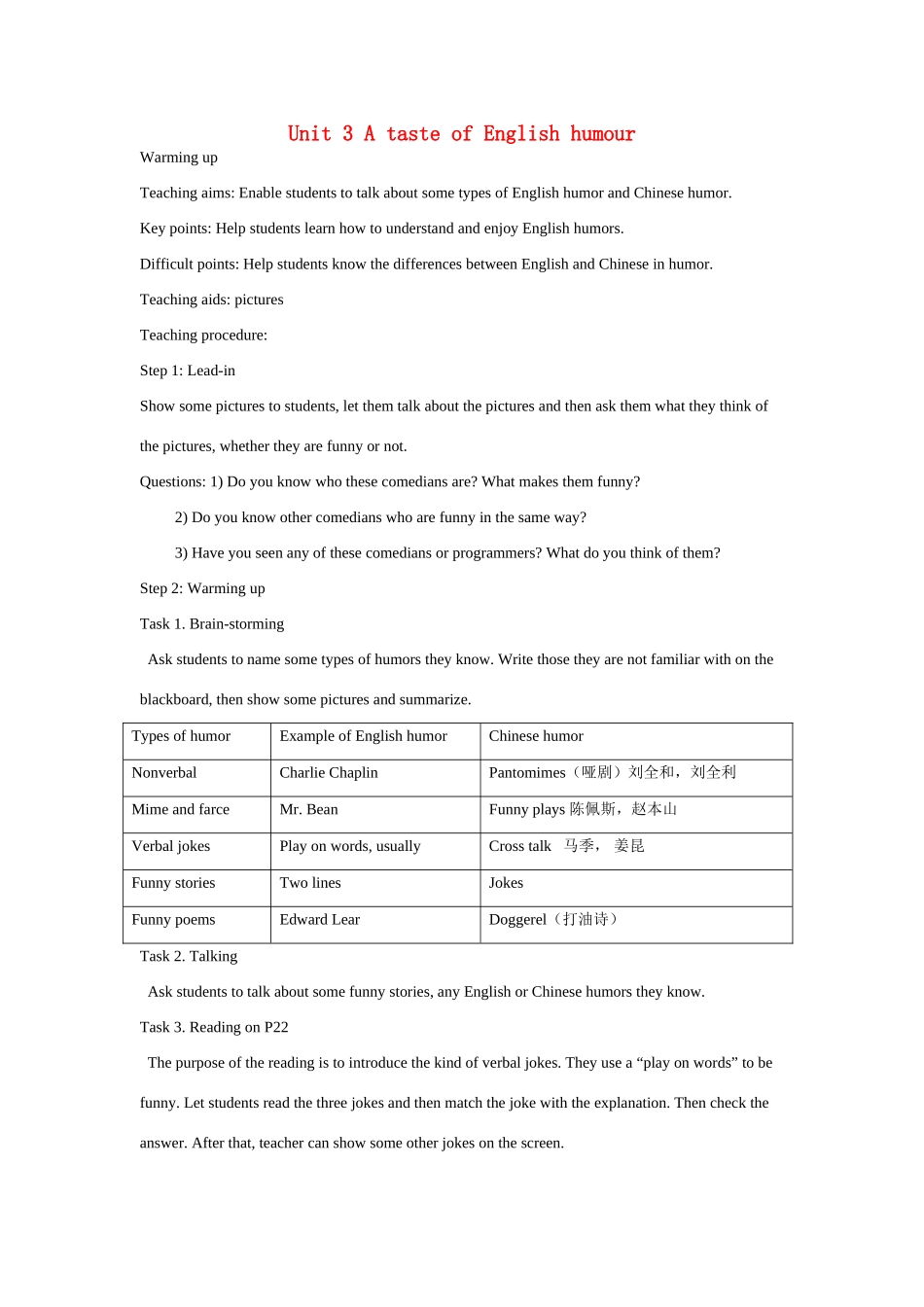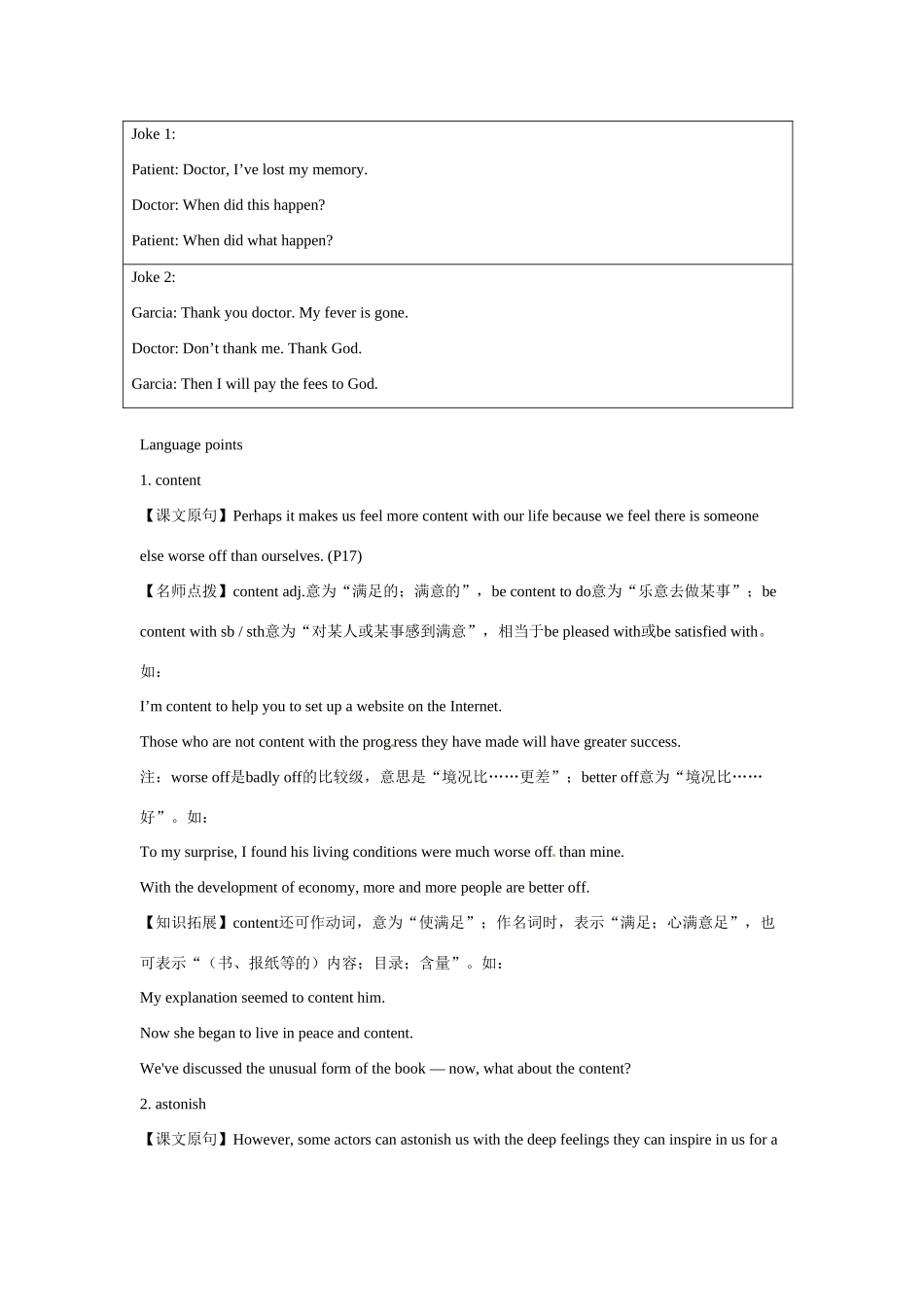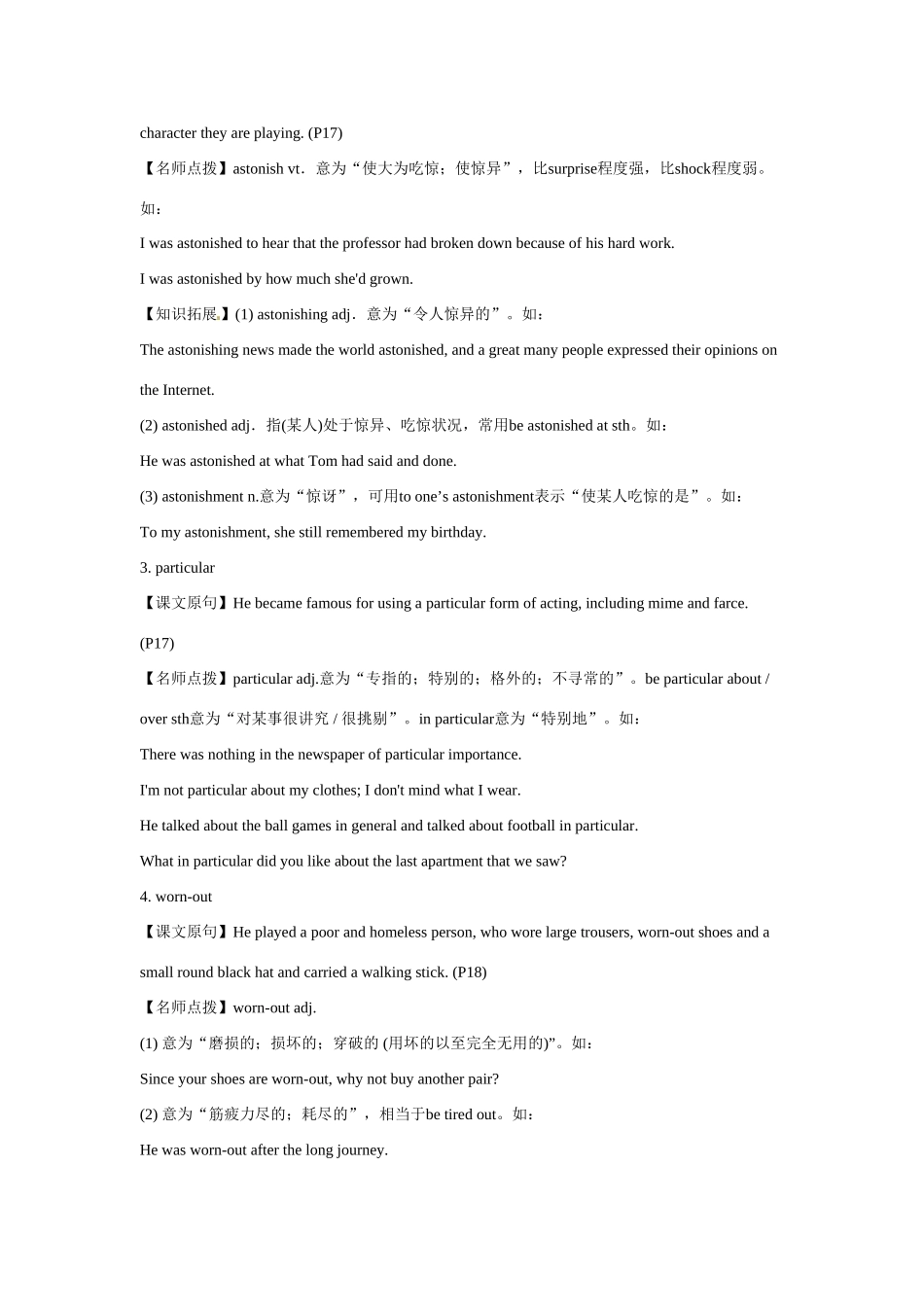Unit 3 A taste of English humourWarming upTeaching aims: Enable students to talk about some types of English humor and Chinese humor.Key points: Help students learn how to understand and enjoy English humors.Difficult points: Help students know the differences between English and Chinese in humor.Teaching aids: picturesTeaching procedure:Step 1: Lead-inShow some pictures to students, let them talk about the pictures and then ask them what they think of the pictures, whether they are funny or not.Questions: 1) Do you know who these comedians are? What makes them funny? 2) Do you know other comedians who are funny in the same way? 3) Have you seen any of these comedians or programmers? What do you think of them? Step 2: Warming upTask 1. Brain-storming Ask students to name some types of humors they know. Write those they are not familiar with on the blackboard, then show some pictures and summarize. Types of humorExample of English humorChinese humorNonverbalCharlie ChaplinPantomimes(哑剧)刘全和,刘全利Mime and farceMr. BeanFunny plays 陈佩斯,赵本山Verbal jokesPlay on words, usuallyCross talk 马季, 姜昆Funny storiesTwo linesJokesFunny poemsEdward LearDoggerel(打油诗)Task 2. Talking Ask students to talk about some funny stories, any English or Chinese humors they know.Task 3. Reading on P22 The purpose of the reading is to introduce the kind of verbal jokes. They use a “play on words” to be funny. Let students read the three jokes and then match the joke with the explanation. Then check the answer. After that, teacher can show some other jokes on the screen.Joke 1:Patient: Doctor, I’ve lost my memory.Doctor: When did this happen?Patient: When did what happen?Joke 2:Garcia: Thank you doctor. My feve...


